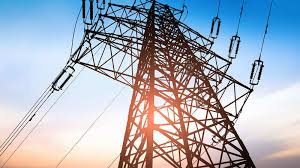
In Short : “Powering ahead” signifies moving forward with strength and momentum, often used in contexts related to progress, growth, or achievement. It’s a concise way to express determination and optimism about advancing towards goals or objectives, especially in the energy sector or any other field where momentum is key.
In Detail : Rooftop solar sops welcome, but electricity sector needs policy stimuli for investments across value chain.
Prime Minister Narendra Modi’s overarching plan for the energy sector has two basic elements: consolidate India’s fledgling status as a net electricity exporter, and make the best use of the incipient electric vehicle (EV) revolution. Voluminous imports of crude petroleum and natural gas (in liquefied form) make the country a net energy importer by a wide margin, despite the fragile surplus in electrical energy. With the country’s oil and gas sector showing no great prospects, and its still-plentiful coal reserves being progressively depleted, only a shift to renewable energy (RE) and electrical energy seems plausible as a long-term solution. While articulating the national energy strategy recently, the prime minister also talked about an aim to make the household electricity bill zero, riding on the plank of a new, government-assisted rooftop solar project — PM Surya Ghar: Muft Bijli Yojana.
Modi’s statement on zero power bill must have boosted expectations among millions of households, but energy experts have welcomed it with an element of incredulity. Rooftop solar units aren’t feasible even for most of India’s pucca houses, leave alone a sizeable section of population that doesn’t yet have such domiciliary comfort. The cost of a workable unit of 5 kilowatt for an ordinary home is pegged at Rs 3-4 lakh, beyond the capacity of vast majority. PM Surya Ghar offers “up to 300 units of free electricity every month” to 10 million households, thanks to the subsidy that covers up to 40% of panel costs. The scheme, considering the fiscal capacity of the government, amounts to a largesse, and is seen to help save Rs 70,000 crore annually as electricity costs. But it can’t alter India’s power-sector economics substantially anytime soon— note that only 0.67 million of India’s 300 million households have rooftop solar units at present, and these accounted for just 2.7% of installed power capacity in FY24.
Leave that aside, augmentation of rooftop solar capacity would still have a major, complementary role in boosting electricity supplies in keeping with fast-rising demand. The rooftop solar plan is also perfectly in sync with India’s pledge to become a net zero emitter by 2070. Pertinently, it doesn’t involve any market distortion, while free power to farmers and indigent households via the cross-subsidy route makes open-access industrial consumers pay much higher tariffs than corresponding to the cost of supplies to them, jacking up all-round costs in the economy.
The solar sector has surged from 8.5% of India’s installed power capacity in FY20 to 15.8% by FY24, making it the only segment that raised the share in the period. It is projected by the Central Electricity Authority to have a share of 40.5% by FY32, when coal-based power’s ground could shrink from 47.7% now to 28.8%. That is when a doubling of the capacity in the entire electricity value chain is being planned for the period (even coal-based capacity is to rise by 50 to 260 gigawatts). The government’s focus now must be to encourage capacity creation via private investments, while maintaining the focus on solar — where India has one of the lowest costs in the world — and also exploring areas like green hydrogen. Direct subsidies would be the rational way of making power affordable to the poor, rather than inflating industrial tariffs via cross-subsidy surcharge. It’s vital to catalyse credit flows to coal mining, thermal power and RE ventures, and stimulate investor interest in RE battery storage to address the issue of supply intermittency.













